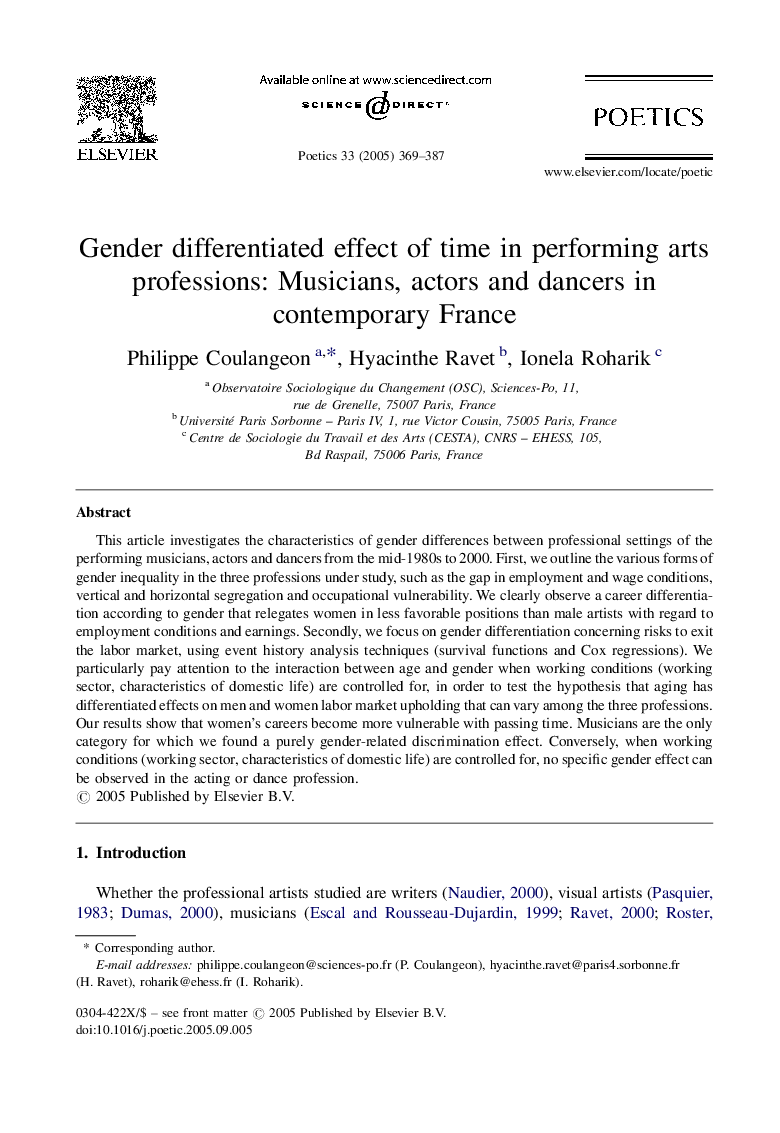| Article ID | Journal | Published Year | Pages | File Type |
|---|---|---|---|---|
| 9739681 | Poetics | 2005 | 19 Pages |
Abstract
This article investigates the characteristics of gender differences between professional settings of the performing musicians, actors and dancers from the mid-1980s to 2000. First, we outline the various forms of gender inequality in the three professions under study, such as the gap in employment and wage conditions, vertical and horizontal segregation and occupational vulnerability. We clearly observe a career differentiation according to gender that relegates women in less favorable positions than male artists with regard to employment conditions and earnings. Secondly, we focus on gender differentiation concerning risks to exit the labor market, using event history analysis techniques (survival functions and Cox regressions). We particularly pay attention to the interaction between age and gender when working conditions (working sector, characteristics of domestic life) are controlled for, in order to test the hypothesis that aging has differentiated effects on men and women labor market upholding that can vary among the three professions. Our results show that women's careers become more vulnerable with passing time. Musicians are the only category for which we found a purely gender-related discrimination effect. Conversely, when working conditions (working sector, characteristics of domestic life) are controlled for, no specific gender effect can be observed in the acting or dance profession.
Related Topics
Social Sciences and Humanities
Arts and Humanities
Arts and Humanities (General)
Authors
Philippe Coulangeon, Hyacinthe Ravet, Ionela Roharik,
